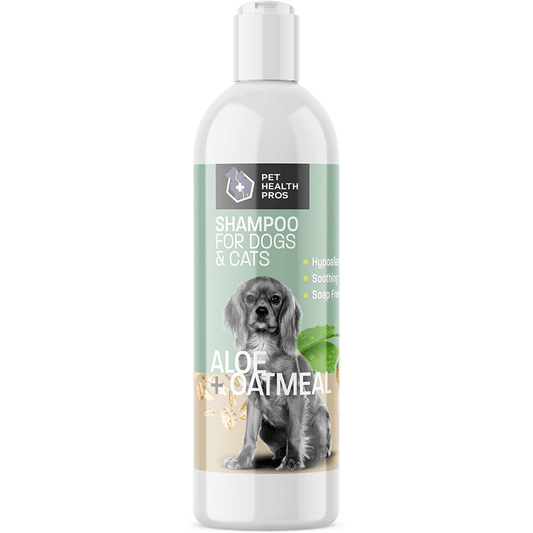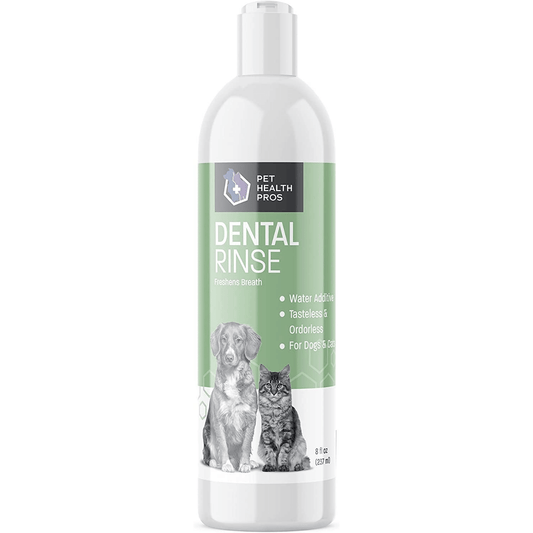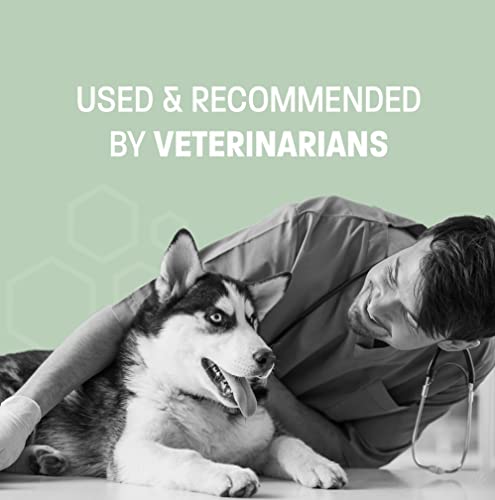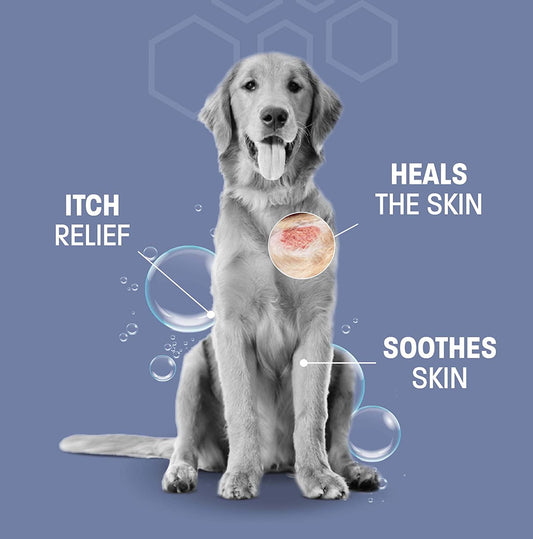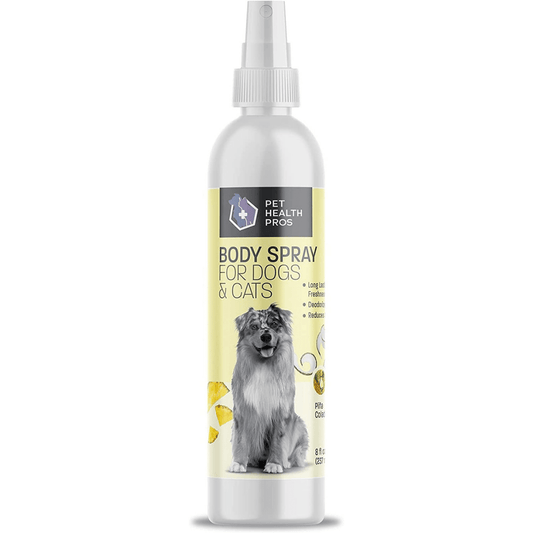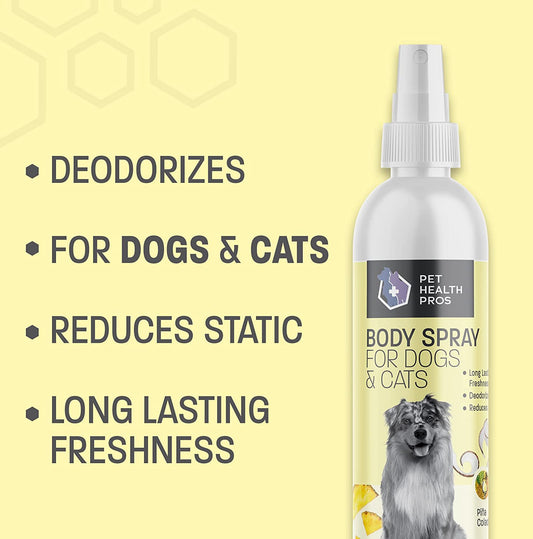Say Goodbye to Chewing with the Best Dog Chewing Repellent
Dog chewing can be a frustrating behavior for pet owners to deal with. Whether it's your shoes, furniture, or household items, dogs have a natural instinct to chew. In this article, we will explore the reasons behind dog chewing behavior and the consequences of excessive chewing.
We will also discuss how to choose the right dog chewing repellent and provide tips on using it effectively. By the end, you'll have the knowledge and tools to say goodbye to chewing and keep your belongings safe.
Key Takeaways
- Understanding why dogs chew is essential for addressing the behavior.
- Different types of chewing behavior include teething, boredom, anxiety, and exploration.
- Excessive chewing can lead to damage to your belongings and potential health issues for your dog.
- When choosing a dog chewing repellent, look for safe and effective ingredients like bitter apple or citrus.
- Consider your dog's breed and specific needs when selecting a repellent.
Understanding Dog Chewing Behavior
Why do dogs chew?
Dogs chew for various reasons, including teething, boredom, anxiety, and exploring their environment. It is a natural behavior for dogs and can be beneficial for their dental health. However, excessive chewing can lead to destructive behavior and potential health issues. Understanding why dogs chew is essential in addressing and managing this behavior.
Different types of chewing behavior
Understanding the different types of chewing behavior in dogs is essential for addressing and managing this common issue. Dogs may chew for various reasons, including teething, boredom, anxiety, or a need for stimulation. By identifying the underlying cause of the chewing behavior, pet owners can implement appropriate strategies to redirect their dog's chewing habits.
-
Teething Chewing: Puppies chew during teething to alleviate discomfort. Provide suitable chew toys to soothe sore gums and encourage healthy chewing habits.
-
Boredom Chewing: Dogs may chew when bored. Combat this by offering interactive toys or engaging in activities that mentally stimulate and entertain your pet.
-
Anxiety Chewing: Dogs may chew due to anxiety. Address underlying stressors and consider calming aids or behavioral training to alleviate anxious behavior.
-
Exploratory Chewing: Curiosity prompts exploratory chewing. Offer a variety of safe textures and toys to satisfy your dog's natural inclination to investigate their surroundings.
-
Attention-Seeking Chewing: Dogs may chew to gain attention. Reinforce positive behavior and provide ample attention to discourage destructive chewing for attention.
The consequences of excessive chewing
Excessive chewing can lead to a variety of negative consequences for both dogs and their owners. It is important to address this behavior to prevent damage to belongings and ensure the safety and well-being of your furry friend.
Choosing the Right Dog Chewing Repellent
Identifying safe and effective ingredients
When choosing a dog chewing repellent, it is important to identify safe and effective ingredients. Look for ingredients that are non-toxic and specifically formulated to deter dogs from chewing.
Some common ingredients found in dog chewing repellents include bitter apple, citrus extracts, and cayenne pepper. These ingredients have a strong scent or taste that dogs find unpleasant, discouraging them from chewing on objects. It is also important to consider any allergies or sensitivities your dog may have to certain ingredients.
Considerations for different dog breeds
When choosing a dog chewing repellent, it is important to consider the specific needs and characteristics of different dog breeds. Each breed has its own tendencies and preferences when it comes to chewing. By understanding these factors, you can select a repellent that is most suitable for your dog.
Here are some key considerations for different dog breeds:
- Size: Smaller breeds may have different chewing behaviors compared to larger breeds. It is important to choose a repellent that is appropriate for your dog's size.
- Energy level: High-energy breeds may require more stimulation and may be more prone to excessive chewing. Consider a repellent that can help redirect their energy.
- Breed tendencies: Certain breeds are more prone to certain types of chewing behavior. For example, some breeds are more likely to chew on furniture or shoes. Look for a repellent that specifically targets these tendencies.
Remember, every dog is unique, and what works for one breed may not work for another. It is important to observe your dog's behavior and consult with a veterinarian if you have any concerns.
Evaluating product reviews and recommendations
When evaluating product reviews and recommendations for dog chewing repellents, it is important to consider the specific needs of your dog and the effectiveness of the ingredients.
Look for repellents that contain safe and effective ingredients such as natural plant extracts or bitter agents. These ingredients can help deter dogs from chewing on furniture, shoes, or other household items. Additionally, take into account the breed of your dog as different breeds may have different chewing behaviors and preferences.
It is also helpful to read product reviews and recommendations from other dog owners who have used the repellent. Their experiences can provide valuable insights into the effectiveness and usability of the product.
Using Dog Chewing Repellent Effectively
Proper application techniques
Proper application techniques are crucial when using dog chewing repellent. By following these techniques, you can ensure the repellent is applied effectively and safely. Here are some key points to keep in mind:
Creating a consistent training routine
Consistency is key when it comes to training your dog. By establishing a regular routine, you can help your dog understand what is expected of them and reinforce good behavior.
Here are some tips to create a consistent training routine:
- Set a specific time each day for training sessions.
- Use positive reinforcement techniques, such as treats or praise, to reward desired behavior.
- Break training sessions into shorter, focused sessions to keep your dog engaged.
- Be patient and consistent with your commands and expectations.
- Gradually increase the difficulty of the training tasks as your dog progresses.
Remember, training takes time and effort, but with consistency, you can help your dog develop good habits and prevent unwanted behaviors.
Monitoring Progress and Making Adjustments
As you continue to use the dog chewing repellent, it is important to monitor your dog's progress and make any necessary adjustments to the training routine. Keep an eye out for any changes in your dog's chewing behavior, such as a decrease in destructive chewing or a reduction in the frequency of chewing incidents.
Consistency is key in training, so make sure to apply the repellent consistently and follow the recommended application techniques. If you notice any bloody stool or other unusual symptoms in your dog, it is important to consult with a veterinarian to rule out any underlying health issues.
Remember to be patient and persistent in your training efforts, as it may take time for your dog to fully adjust to the repellent and break the habit of excessive chewing.
Using Dog Chewing Repellent Effectively
Dogs have a natural instinct to chew, and while it's normal behavior, it can be destructive and costly. That's where dog chewing repellent comes in. By using dog chewing repellent effectively, you can protect your belongings and save money on replacements.
At Pet Health Pros, we offer a wide range of dog chewing repellent products that are safe and effective. Our repellents are made with natural ingredients and are designed to deter dogs from chewing on furniture, shoes, and other household items. With our affordable prices and 100% satisfaction guarantee, you can shop with confidence knowing that you're getting top-grade pet health supplies. Visit our website today to browse our selection of dog chewing repellents and start protecting your belongings.
Conclusion: Taming Chewing Habits for a Harmonious Pet Lifestyle
In conclusion, understanding dog chewing behavior is crucial for addressing this common issue. By choosing the right dog chewing repellent and using it effectively, dog owners can prevent excessive chewing and protect their belongings. Remember to identify safe and effective ingredients, consider the specific needs of different dog breeds, and evaluate product reviews and recommendations. Additionally, proper application techniques, consistent training routines, and monitoring progress are key to success. With the right approach, dog owners can say goodbye to chewing and enjoy a harmonious relationship with their furry friends.
Frequently Asked Questions
Is dog chewing repellent safe for puppies?
Yes, dog chewing repellent can be safe for puppies. However, it is important to choose a repellent that is specifically formulated for puppies and follow the instructions carefully.
Can I use dog chewing repellent on furniture?
Yes, dog chewing repellent can be used on furniture. It is important to test the repellent on a small, inconspicuous area first to ensure that it does not damage or stain the furniture.
How long does it take for dog chewing repellent to work?
The effectiveness of dog chewing repellent can vary depending on the product and the individual dog. In general, it may take a few days to a few weeks for the repellent to start showing results.
Can I use dog chewing repellent outdoors?
Yes, dog chewing repellent can be used outdoors. However, it is important to choose a repellent that is specifically designed for outdoor use and follow the instructions carefully.
Will dog chewing repellent stop all types of chewing behavior?
Dog chewing repellent can help deter dogs from chewing on certain objects, but it may not stop all types of chewing behavior. It is important to provide appropriate chew toys and engage in proper training to address chewing behavior.
Can dog chewing repellent be harmful to humans?
Dog chewing repellent is generally safe for humans when used as directed. However, it is important to avoid ingesting or getting the repellent in your eyes or mouth. If accidental exposure occurs, rinse thoroughly with water and seek medical attention if necessary.


